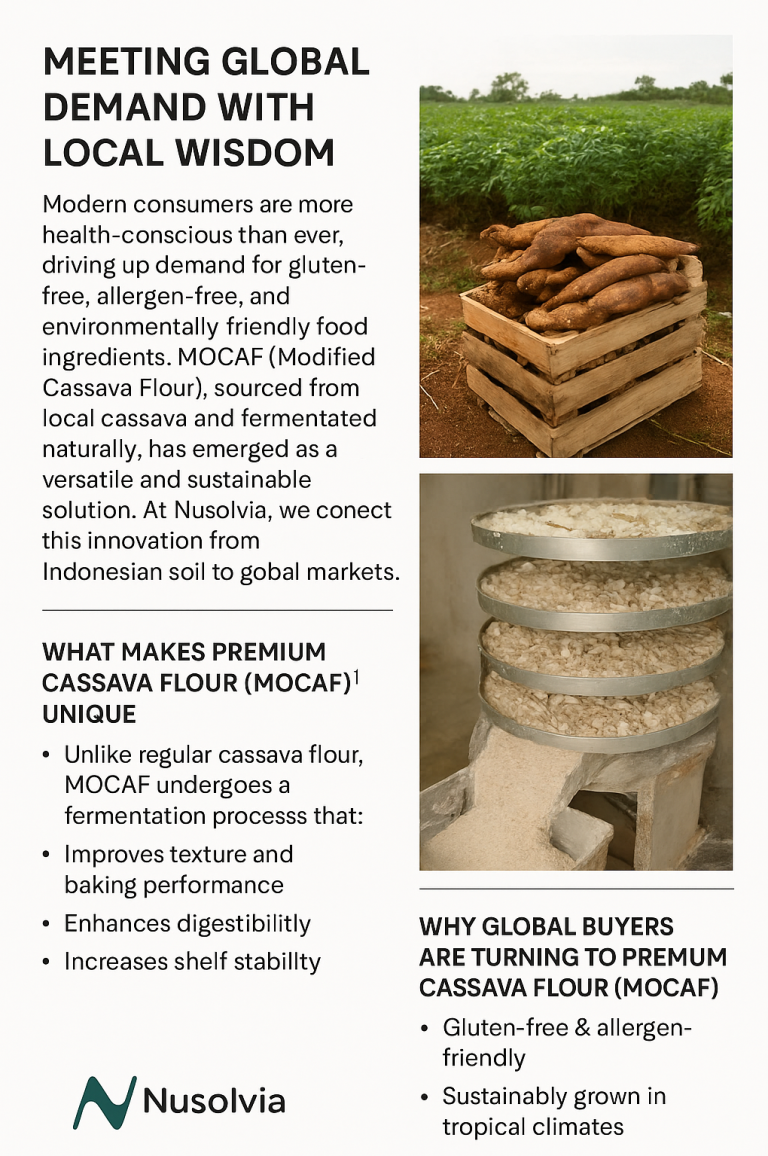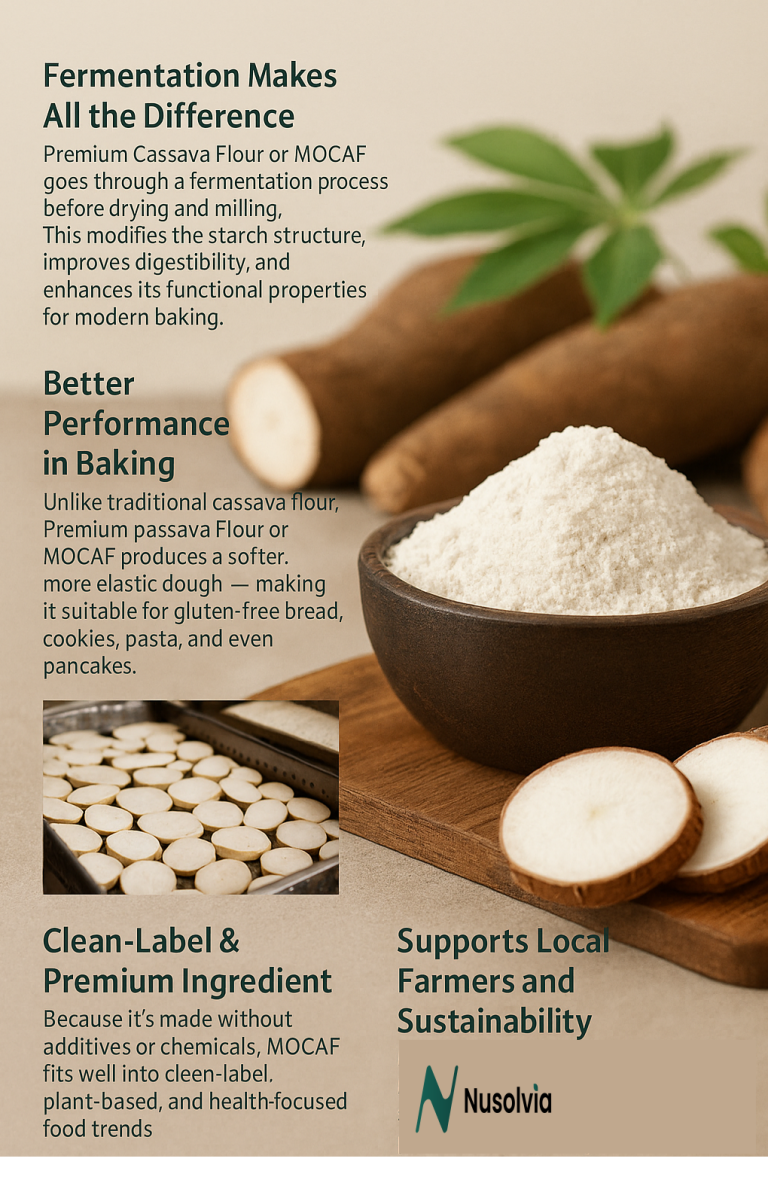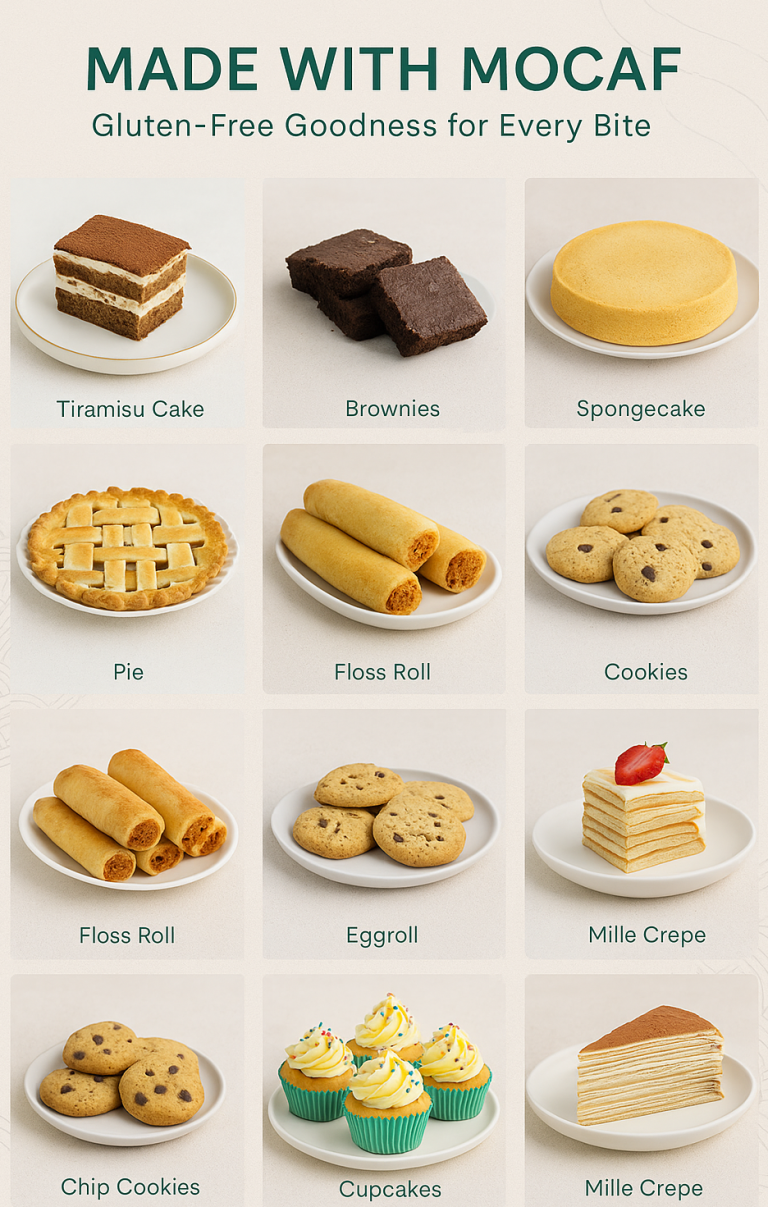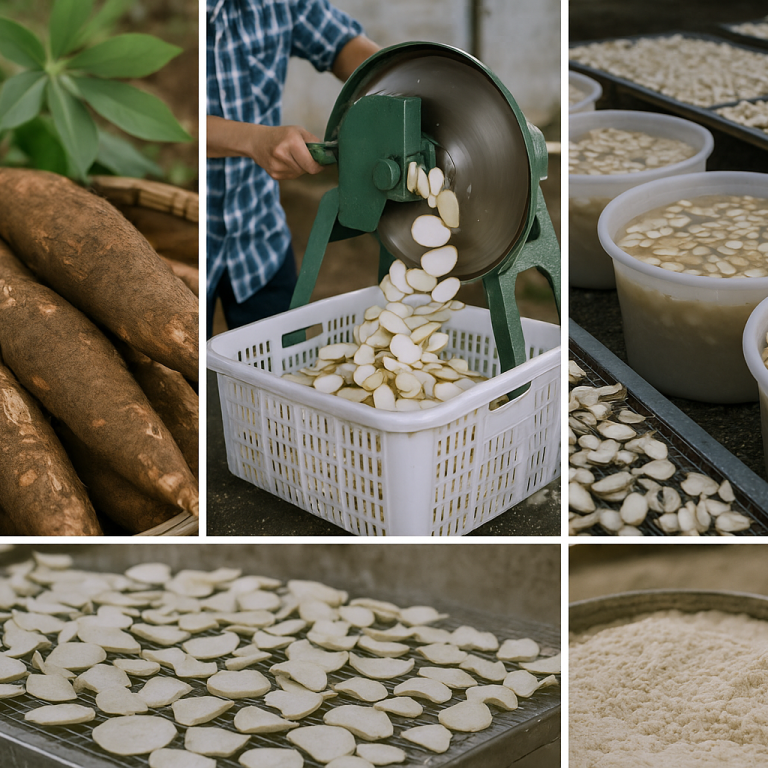A deep dive into Indonesia’s premium cassava flour and how it meets the growing demand for clean-label, plant-based ingredients
About Premium Cassava Flour (MOCAF)
Nusolvia’s Role in Premium Cassava Flour (MOCAF) Export
We source directly from vetted producers with consistent capacity and quality control.
Our export service includes:
- Custom packaging
- Flexible MOQs
- Transparent documentation
- Port handling (FOB Tanjung Emas Port / Semarang)
The Smart Choice for Sustainable Growth
As gluten-free and functional food trends continue to rise, Premium Cassava Flour or MOCAF presents a premium alternative to traditional flour — and an opportunity for buyers to future-proof their supply chains.
Want to test MOCAF samples or learn about its applications? Contact us at sales@nusolvia.com to get started.
Contact us at sales@nusolvia.com to discuss product specs, pricing, and partnership options.

Premium (MOCAF) vs. Traditional Cassava Flour: What’s the Difference and Why It Matters

Key Differences at a Glance
Cassava flour has long been a widely used product in tropical agriculture — but not all cassava flour is created equal.
With rising global interest in gluten-free and clean-label foods, a new star has emerged: Premium Cassava Flour or MOCAF
But how exactly is MOCAF different from regular cassava flour? And why are food manufacturers and health-conscious consumers paying attention?
Conclusion: Why It Matters
Whether you’re a food manufacturer looking for a reliable wheat alternative or a consumer looking to understand your ingredients better, knowing the difference between Premium (MOCAF) and standard cassava flour helps you make smarter, healthier, and more sustainable choices.
Want to test MOCAF samples or learn about its applications? Contact us at sales@nusolvia.com to get started.
A premium alternative to traditional wheat flour.
Discover the Versatility of Premium Cassava Flour (MOCAF)
Whether you're a home baker, food manufacturer, or cafe owner, premium cassava flour fits seamlessly into a wide variety of sweet and savory creations:
Bread Products
- Sandwich Loaf
- Dinner Rolls
- Burger Buns
- Flatbreads
Cakes & Pastries
- Tiramisu Cake
- Sponge Cake
- Red Velvet Roll Cake
- Brownies
- Cupcakes
- Mille Crepe
Cookies & Snacks
- Chocolate Chip Cookies
- Butter Cookies
- Cheese Sticks
- Floss Rolls & Eggrolls
- Savory Crackers
Desserts & Pies
- Fruit Pies
- Custard Tarts
- Crepes

MOCAF’s ability to mimic the structure of wheat flour without the allergens or additives makes it a perfect substitute in gluten-free baking without compromising texture or taste.
Whether you're looking to produce gluten-free bakery products or offer allergen-friendly snacks, MOCAF is a game-changer.
Contact Nusolvia to request a sample, technical sheet, or MOQ pricing today.
sales@nusolvia.com | www.nusolvia.com
How to Process Cassava into Premium Cassava Flour (MOCAF)
Premium Cassava Flour (MOCAF) is a gluten-free flour made from fermented cassava roots, offering a nutritious and sustainable alternative to wheat flour. The fermentation process enhances the flour’s functional properties — improving aroma, texture, and digestibility — making it highly suitable for health-conscious and gluten-intolerant consumers.
Here’s a step-by-step guide to processing cassava into MOCAF:

1. Raw Cassava Selection
Choose fresh, mature cassava roots (usually 8–12 months old) with:
High starch content
No signs of decay, disease, or insect damage
Tip: Use varieties with low cyanide content for safety and quality.
2. Peeling and Washing
Manually or mechanically peel the outer brown and inner pink layers.
Wash thoroughly to remove dirt, sand, and latex.
Why? Clean cassava ensures better fermentation and final flour purity.
3. Chipping / Slicing
Cut the peeled cassava into small chips or thin slices (~3–7 mm thick).
Uniform sizes ensure even fermentation and drying later on.
4. Fermentation (12–48 hours)
Soak the cassava chips in clean water (in tanks or drums).
Allow natural fermentation with lactic acid bacteria to improve & speed up the process.
Fermentation Benefits:
- Reduces cyanide
- Softens texture
- Enhances aroma and elasticity
- Improves digestibility
5. Draining and Washing
After fermentation, drain the water and wash the fermented cassava to remove residual excess from fermentation process.
6. Drying
Dry the fermented cassava chips using:
Sun drying (low-cost, but weather-dependent)
Mechanical drying (e.g., cabinet or tray dryers)
Target moisture content: ≤ 12% for safe storage and milling.
7. Milling / Grinding
Once fully dried, grind the chips into fine flour using a hammer mill or disc mill.
Sieve the flour (typically through an 80–100 mesh screen) to ensure uniform fineness.
8. Packaging and Storage
Pack MOCAF in food-grade woven or kraft paper bags, typically 20–25 kg per bag.
Store in a cool, dry, well-ventilated space to avoid mold or insect contamination.
